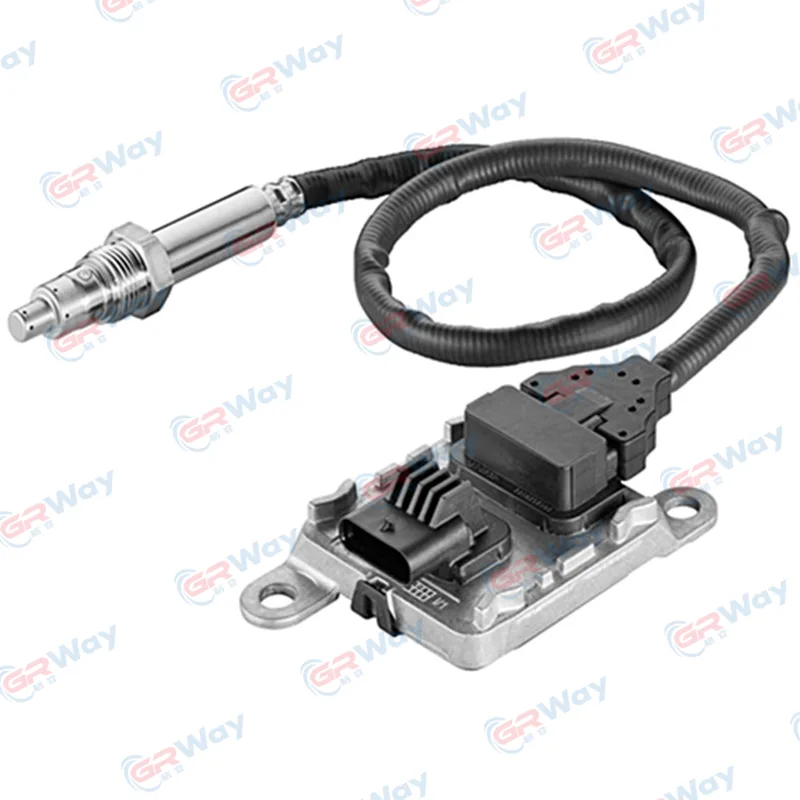How to Resolve Issues Encountered When Using Comprehensive NOx Sensors For Automobile?
2025-11-05
 When Comprehensive NOx Sensors for Automobile malfunction during use, it can lead to a series of distinct operational problems. If the sensor cannot accurately detect the concentration of nitrogen oxides in the exhaust, the engine control unit will be unable to perform precise closed-loop control of nitrogen oxide emissions. This can cause the vehicle's actual emissions to exceed standards, especially under dynamic driving conditions, where instantaneous nitrogen oxide emissions may increase significantly, thus affecting the vehicle's compliance with environmental regulations. Simultaneously, inaccurate nitrogen oxide signals may cause malfunctions in the urea injection of the downstream selective catalytic reduction system, leading to ammonia leakage or decreased nitrogen oxide conversion efficiency, further exacerbating the overall performance degradation of the emission control system.
When Comprehensive NOx Sensors for Automobile malfunction during use, it can lead to a series of distinct operational problems. If the sensor cannot accurately detect the concentration of nitrogen oxides in the exhaust, the engine control unit will be unable to perform precise closed-loop control of nitrogen oxide emissions. This can cause the vehicle's actual emissions to exceed standards, especially under dynamic driving conditions, where instantaneous nitrogen oxide emissions may increase significantly, thus affecting the vehicle's compliance with environmental regulations. Simultaneously, inaccurate nitrogen oxide signals may cause malfunctions in the urea injection of the downstream selective catalytic reduction system, leading to ammonia leakage or decreased nitrogen oxide conversion efficiency, further exacerbating the overall performance degradation of the emission control system.
So how to solve this problem?
1. First, check the physical condition of the Comprehensive NOx Sensors for Automobile, including whether the probe is covered with oil or carbon deposits, and whether the connectors and wiring harnesses are corroded or physically damaged, ensuring the sensor is in a suitable working environment.
2. Check whether the heating resistance value is within the critical range. If it is open-circuited, the sensor assembly must be replaced. Cracks in the ceramic body must be removed from use to prevent structural collapse at high temperatures and contamination of the catalytic converter. Oxidized connectors must be treated with a specialized electronic cleaner and re-applied with waterproof sealant. Damaged wiring harnesses must be repaired with high-temperature resistant double-wall heat shrink tubing; ordinary electrical tape should not be used.
3. The real-time output signals and internal parameters of the sensors must be read using professional diagnostic tools to determine if their performance has degraded or drifted. Sensors with degraded performance typically need to be replaced, and after replacement, necessary system reset and adaptive learning procedures must be performed to ensure the new sensor works in harmony with the vehicle's emission control system.
Parameter
|
|
Gen3.5(TT3 & JM6) |
|
1. Range |
NOx: 0~2500ppm O2: 0% ~ 21% |
|
2. Accuracy Nox |
0~100ppm: +/-10ppm 100 ppm~500ppm: +/-10% 500ppm~1500ppm: +/-15% 1500~2500ppm: +/-30 % |
|
3. Accuracy O2 |
0%~5% O2±0.2% 5 %~21% O2±4% |
|
4. Response Time |
t10<-->90%λlin < 3550ms t10<-->90%NOx < 3900ms |
|
5. Power Supply |
12V, Univot |
|
6. Light Off Time |
165s Dewpoint to first signal within spec |
|
7. Design Life Time |
6000h or 350.000km |
|
8. Sensor Cable Length |
408mm…908mm with 50mm step width |
|
9.Exhaust Temperature |
-40~800° |
|
10. Wire Temperature |
-40~200° |
|
11.Cross Sensitivity |
NO2, NH3 Pressure |



























